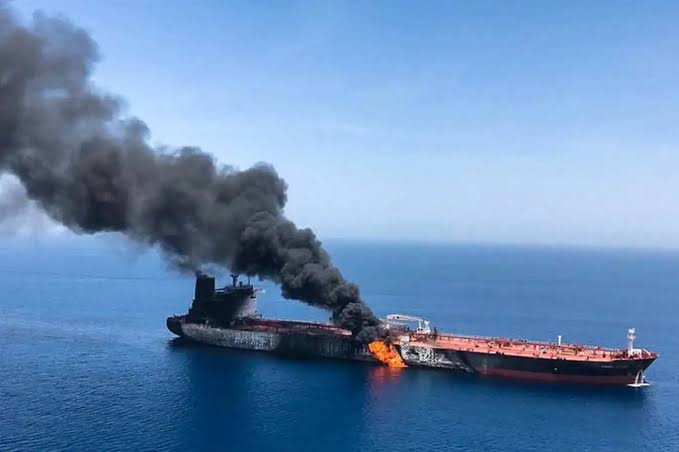
In recent years, the Red Sea region has become an epicentre of geopolitical tension, posing a significant threat to maritime stability. The International Maritime Organization (IMO), tasked with ensuring the safety and security of maritime navigation worldwide, faces unprecedented challenges in maintaining order in this tumultuous environment. The decline of multilateralism, fuelled by geopolitical conflicts and great power rivalries, is eroding the effectiveness of the IMO, leaving the Red Sea Crisis unresolved and maritime safety compromised.
The Secretary general of IMO admitted that the crisis in the Red Sea is geopolitical in nature and IMO’s capacity to put the crisis under control is beyond its reach. His concern was delivered amid the increasing attacks against the Indian Ocean cargo vessels passing the Red Sea, following the war between Israel and Palestine that has been renewed since October 2023.
The crisis escalates after Iran’s backed Houthi launched numerous attacks in the Red Sea which restarted since October 9th 2023, resulted in number of ports blockade, following with the ban of ships passage through Suez Canal. The crisis is reportedly severely disrupt the busiest shipping lane, through Bab al Mandeb, which handles about 30% of global contained traffic. Increased attack on vessel and piracy have led to a 1,3% decline in international trade through the Red Sea and shipping delays rising over 25%. These economic shocks highlight the global stakes but also the difficulty of achieving multilateral consensus to safeguard these vital routes amid the ongoing conflict. The maritime economy in the region is further damaging as Israel and Iran enter an official phase of a total war. Missiles have been exchanged and number of victims from both sides is predicted to increase.
The Red Sea Crisis spread to wider Ocean that connecting Africa, India and Southeast Asia. As a critical artery for global trade, Indian Ocean has become a theatre for great power rivalry, further complicating the Red Sea situation. The strategic interests of major powers, including the United States, China, and India have intensified competition for influence in the region. This rivalry has led to an arms race and increased military presence, diverting attention away from cooperative efforts to ensure maritime stability. The IMO, reliant on international consensus and cooperation, find itself unable to navigate waters of great power politics, leaving the Red Sea crisis to fester.
Furthermore, the Red Sea has been witnessing the rise of Middle Eastern countries that are competing for influence, Saudi Arabia, UAE, Turkiye and Qatar often taking sides in conflicts in Yemen, Sudan, and the horn of Africa. This regional rivalry complicates multilateral diplomacy and security cooperation, as these states pursue divergent agendas that fuel instability rather than collective peacebuilding.
In addition, IMO has depended heavily on the United States and its European allies to uphold multilateralism and democratic principles. However, this reliance has proven to be a double-edged sword. These powers has their own geopolitical agendas, which may not always align with the broader goal of maritime stability. As their influence wanes in certain regions, the IMO’s effectiveness is further diminished.
To address the challenges posed by the Red Sea, the IMO must undergo a strategic transformation. The Organization must diversify its partnership, engaging with emerging powers and regional stakeholders to foster a more inclusive and resilient multilateral framework. It needs to embrace a multipolar approach, engaging a wider array of actors beyond its traditional allies. By incorporating regional powers and fostering dialogue among conflicting parties, the IMO can regain its authority and effectiveness. Strengthening institutional frameworks and promoting transparent, cooperative governance will be crucial in restoring maritime stability in the Red Sea and beyond.
This article examines how the UN Security Council’s veto power...
This article explores the concept of science diplomacy as a...
This article uncovers how the political ascent of Zohran Mamdani...
This article examines how the global silence over Sudan’s humanitarian...
This article examines the way artificial intelligence is transforming global...
This article reexamines the meaning of ASEAN neutrality in light...
This article analyzes the geopolitical and institutional significance of the...
This article examines how deepfakes have evolved from isolated digital...
This article critically examines the evolving contestation of the Responsibility...
This article contends that Trump’s high-value diplomacy in the Gulf...
This article examines how the EU-ASEAN partnership has significantly evolved...
This article examines how President Prabowo Subianto seeks to combine...
This article takes a look at how Prabowo’s UN address...
This article explores how Gulf states, particularly Saudi Arabia and...
This article examines Armenia’s blocked bid to join the Shanghai...
This article examines Indonesia’s recent acquisition of the Turkish-made KHAN...
This article explores how U.S. tariffs, intended to strengthen leverage...
This article explores how the OIC, despite its authority to...
This article examines how the 2025 recognition of Palestine by...
This article shows how the United States’ 19% tariff on...
This article reflects on the Thailand–Cambodia border dispute, capturing it...
This article examines how the absence of coordinated trade negotiations...
This article explores the strategic implications of the Indonesia–Turkey defence...
This article reveals how Hungary, a country that is frequently...
Leave A Comment